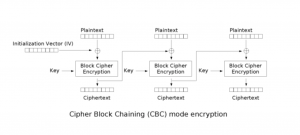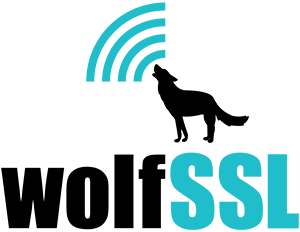A block cipher is an encryption method that applies a deterministic algorithm along with a symmetric key to encrypt a block of text, rather than encrypting one bit at a time as in stream ciphers. For example, a common block cipher, AES (Advanced Encryption Standard), encrypts 128 bit blocks with a key of predetermined length: 128, 192, or 256 bits. Block ciphers are pseudorandom permutation (PRP) families that operate on the fixed size block of bits. PRPs are functions that cannot be differentiated from completely random permutations and thus, are considered reliable, until proven unreliable.
Block cipher modes of operation have been developed to eliminate the chance of encrypting identical blocks of text the same way, the ciphertext formed from the previous encrypted block is applied to the next block. A block of bits called an initialization vector (IV) is also used by modes of operation to ensure ciphertexts remain distinct even when the same plaintext message is encrypted a number of times.
Some of the various modes of operation for block ciphers include CBC (cipher block chaining), CFB (cipher feedback), CTR (counter), and GCM (Galois/Counter Mode), among others. AES, described above, is an example of a CBC mode where an IV is crossed with the initial plaintext block and the encryption algorithm is completed with a given key, and the ciphertext is then outputted. This resultant cipher text is then used in place of the IV in subsequent plaintext blocks.

For information on the block ciphers that are implemented in wolfSSL or to learn more about the wolfSSL lightweight, embedded SSL library, visit wolfssl.com or contact us at facts@wolfssl.com.
References
[1] Pseudorandom permutation. (2014, November 23). In Wikipedia, The Free Encyclopedia.Retrieved 22:06, December 18, 2014, from http://en.wikipedia.org/w/index.php?title=Pseudorandom_permutation&oldid=635108728.
[2] Margaret Rouse. (2014). Block Cipher [Online]. Available URL: http://searchsecurity.techtarget.com/definition/block-cipher.
[3] Block cipher mode of operation. (2014, December 12). In Wikipedia, The Free Encyclopedia. Retrieved 22:17, December 18, 2014, from http://en.wikipedia.org/w/index.php?title=Block_cipher_mode_of_operation&oldid=637837298
[4] Wikimedia. (2014). Available URL: http://upload.wikimedia.org/wikipedia/commons/d/d3/Cbc_encryption.png.

